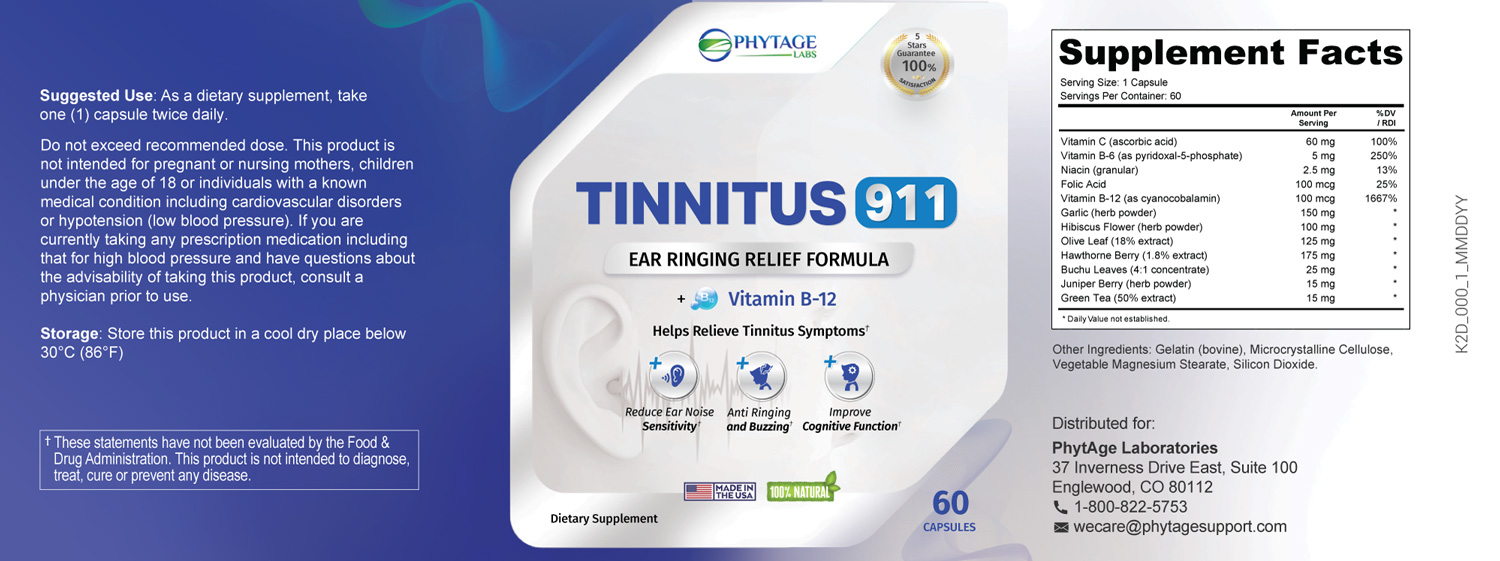Scientific Research & Evidence
Discover the science behind Tinnitus 911™. Find evidence-based research and studies about how tinnitus affects the brain, our ingredients, plus more.
Schelee, Windried and others, “Mapping Cortical Hubs in Tinnitus”, in BMC Biology 2009. (https://bmcbiol.biomedcentral.com/articles/10.1186/1741-7007-7-80)
Sedley, William and others, “Intracranial Mapping of Cortical Tinnitus System Using Residual Inhibition”, in Current Biology, Volume 25, Issue 9, p. 1209-124, May 2015. (https://www.cell.com/current-biology/abstract/S0960-9822(15)00278-X)
Luscher, Christian, “The Synapse: Center Stage for Many Brain Diseases”, in The Journal of Physiology, February 2009, p. 727-729.(https://www.ncbi.nlm.nih.gov/pmc/articles/PMC2669966/)
Mahoney, Colin J. and others, “Structural Neuroanatomy of Tinnitus and Hypercusis in Semantic Dementia”, in Journal of Neurology, Neurosurgery and Psychiatry, p. 1274-1278, November 2011 (https://www.ncbi.nlm.nih.gov/pmc/articles/PMC3188784/)
David O. Kennedy, “B Vitamins and the Brain: Mechanisms, Dose and Efficacy—A Review”, in Nutrients, February 2016.(https://www.ncbi.nlm.nih.gov/pmc/articles/PMC4772032/)
Marnett, Lawrence J., “Free Radical Mechanism of Neurotoxicity”, in Chemical Research in Toxicology, Volume 10, Issue 5, May 1997.(https://pubs.acs.org/doi/pdf/10.1021/tx970493u)

REFERENCES:
Hibiscus (Hibiscus sabdariffa)
Dr. Duke’s Phytochemical and Ethnobotanical Databases. List of Plants for Tinnitus. Plant. Chemical Count. Activity Count “Hibiscus sabdariffa, Chemical Count 42, Activity Count 19”.
https://phytochem.nal.usda.gov/phytochem/superActivity/plantList/148.pdf?max=2094&offset=0&sort=cact&order=desc&filter=0&count=2094&ubiq=
Hawthorne Berry (Crataegus oxyacantha)
Caffeic acid “Caffeic acid has been identified in plants used for medicinal purposes, includingDavalla mariesii Moore (Davalliaceae), a fern used in Korean folk medicine for the treatment of the common cold, neuralgia and stomach cancer and in China as a traditional medicine for treatment of lumbago, rheumatism, toothache and tinnitus (Cui et al., 1990); the roots of Carissa spinarum L. (Apocyaceae), a thorny, evergreen shrub … including caffeic acid, in the medicinal plant Crataegus oxyacantha”
https://www.ncbi.nlm.nih.gov/books/NBK513593/
Olive Extract
Olive: MedlinePlus Supplements, U.S. National Library of Medicine, “applied to the skin (used topically) for earwax, ringing ears (tinnitus), pain in the ears,”
https://medlineplus.gov/druginfo/natural/233.html
Niacin (B3) (Nicotinic acid)
Tinnitus: Facts, Theories, and Treatments “Atkinson (1944a) found that about 50 percent of his (selected) patients reported relatively long-term relief from their tinnitus while under chronic maintenance dosages of nicotinic acid”
https://www.ncbi.nlm.nih.gov/books/NBK217858/
Vitamin B12
Diagnostic Approach to Tinnitus RICHARD W. CRUMMER, M.D., and GHINWA A. HASSAN, M.D. State University of New York–Downstate, Brooklyn, New York “Various metabolic abnormalities may be associated with tinnitus. These abnormalities include hypothyroidism, hyperthyroidism, hyperlipidemia, anemia, and vitamin B12 or zinc deficiency”
http://citeseerx.ist.psu.edu/viewdoc/download?doi=10.1.1.730.8719&rep=rep1&type=pdf
Vitamin B6
Alternative medications and other treatments for tinnitus: facts from fiction Michael D. Seidman, MD a,*, Seilesh Babu, MD Department of Otolaryngology–Head and Neck Surgery, Henry Ford Health System “Supplemental B6 is commonly used as a treatment for nausea, morningsickness, depression, and tinnitus.”
http://citeseerx.ist.psu.edu/viewdoc/download?doi=10.1.1.543.8889&rep=rep1&type=pdf
Buchu leaves (Agathosma betulina)
Dr. Duke’s Phytochemical and Ethnobotanical Databases. List of Plants for Tinnitus. Plant. Chemical Count. Activity Count “Agathosma betulina, Chemical Count 34, Activity Count 20″.
https://phytochem.nal.usda.gov/phytochem/superActivity/plantList/148.pdf?max=2094&offset=0&sort=cact&order=desc&filter=0&count=2094&ubiq=
Green Tea
Diet for Tinnitus, M. Usman, John Davidson Publishing, Mendon Cottage Books “There are three types of teas that should be consumed by tinnitus sufferers. These include: i. Green tea: Being one of the most respected types of tea, green tea …”
https://www.thehealthyjournal.com/faq/does-green-tea-help-tinnitus
Juniper berries (Juniperus communis)
Dr. Duke’s Phytochemical and Ethnobotanical Databases. List of Plants for Tinnitus. Plant. Chemical Count. Activity Count “Juniperus communis, Chemical Count 65, Activity Count 22″.
https://phytochem.nal.usda.gov/phytochem/superActivity/plantList/148.pdf?max=2094&offset=0&sort=cact&order=desc&filter=0&count=2094&ubiq=
Vitamin C
Antioxidant therapy in idiopathic tinnitus “Patients underwent an 18-week oral treatment with a mix of phospholipids and vitamins (glycerophosphorylcholine, glycerophosphorylethanolamine, beta-carotene, vitamin C, vitamin E). … Oral antioxidant therapy in patients with idiopathic tinnitus seems to reduce the subjective discomfort and tinnitus intensity and may be considered as an additional treatment modality.”
https://www.ncbi.nlm.nih.gov/pubmed/17416295
© 2019-2020 fightingtinnitussolution.com – All Rights Reserved.
